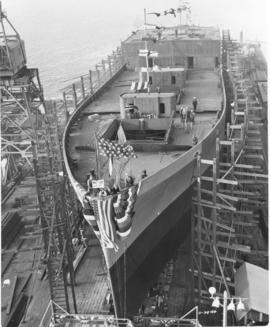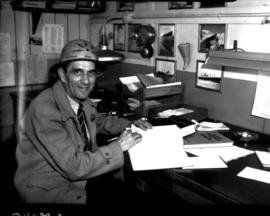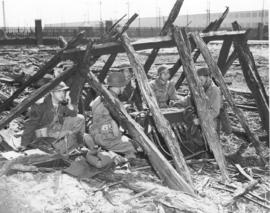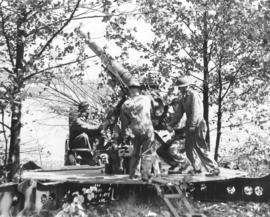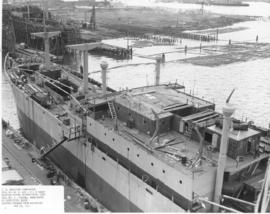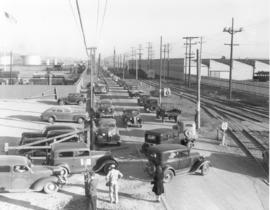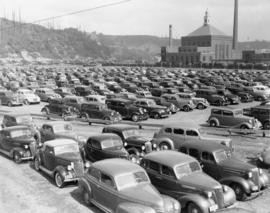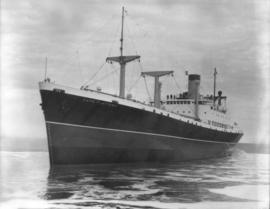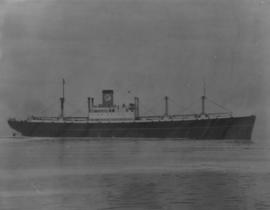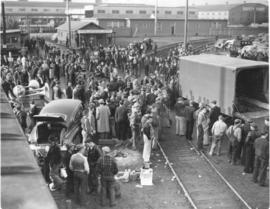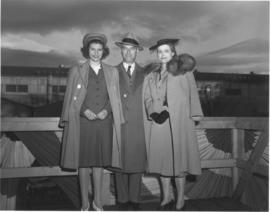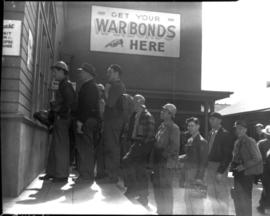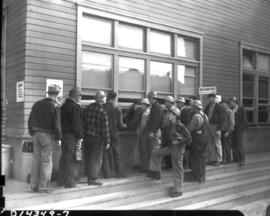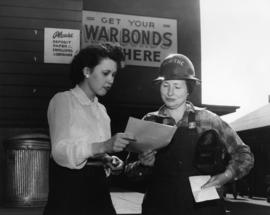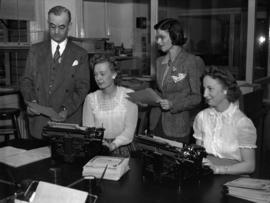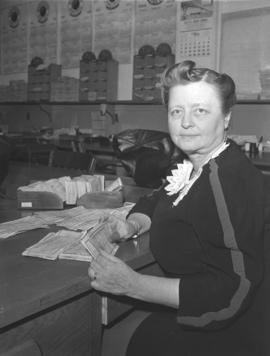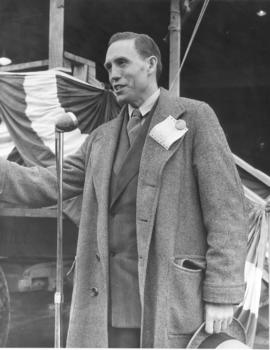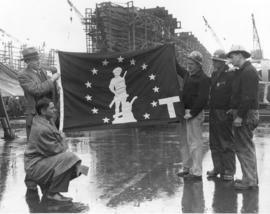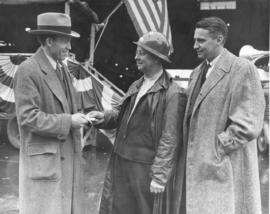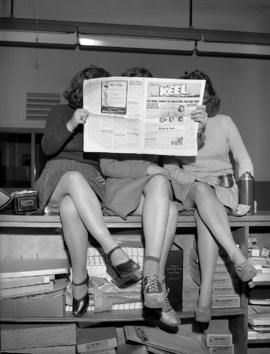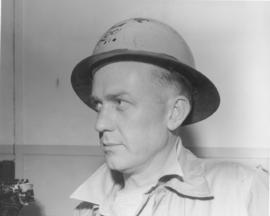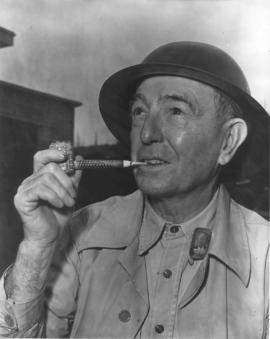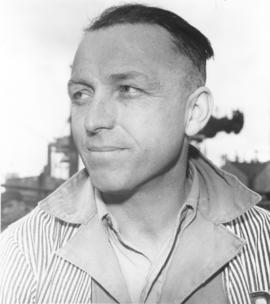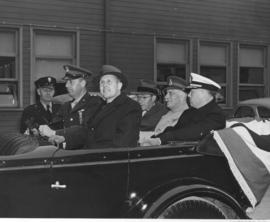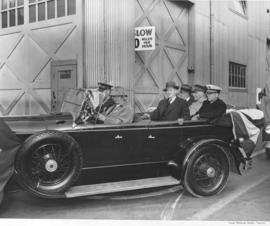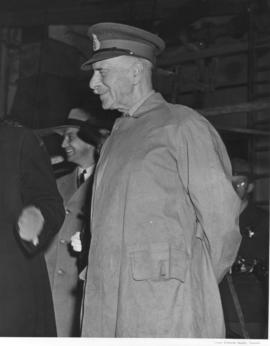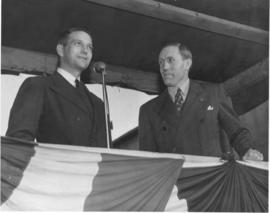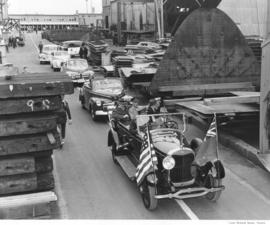- Item
- 1940-11-29
Part of Richards Studio Photographs
Launch of Seattle Tacoma Shipbuilding Co. Hull #3, the Cape Cleare. The launch was held November 29, 1940 and was not open to the public. The Cape Cleare was the 3rd of a quintet of 415 foot merchant motorships contracted by the U.S. Maritime Commission. All five would be identical cargo vessels with room for eight passengers plus a crew of 40, built at a cost of $2, 125,00 each. The ultra modern vessels were welded steel throughout. The keel for third vessel was laid August 7th and it was scheduled for completion late in February. The Cape Cleare was named after a prominent headland in Alaska. Mrs. William E. Boeing was the sponsor. TPL-1851 (T. Times 11/12/1940, pg. 1)
Seattle-Tacoma Shipbuilding Corp. (Tacoma); World War, 1939-1945--Economic & industrial aspects--Tacoma; Boat & ship industry--Tacoma--1940-1950; Launchings--Tacoma--1940-1950;
